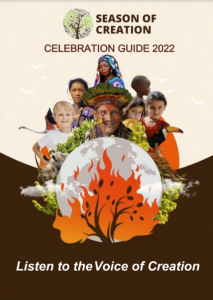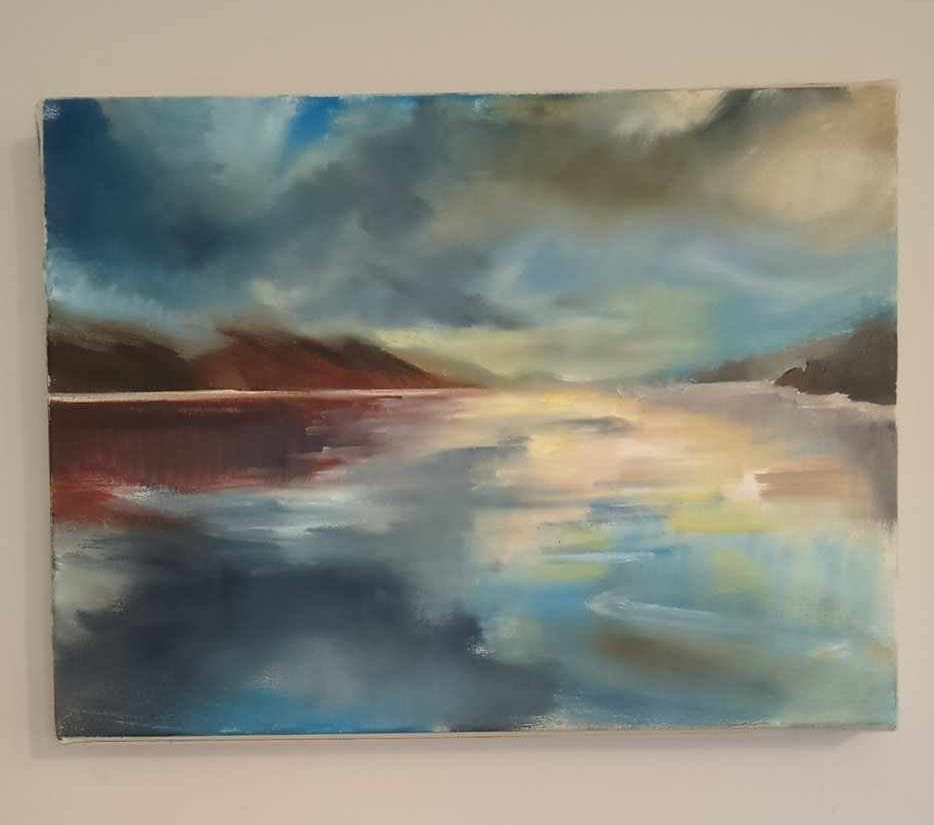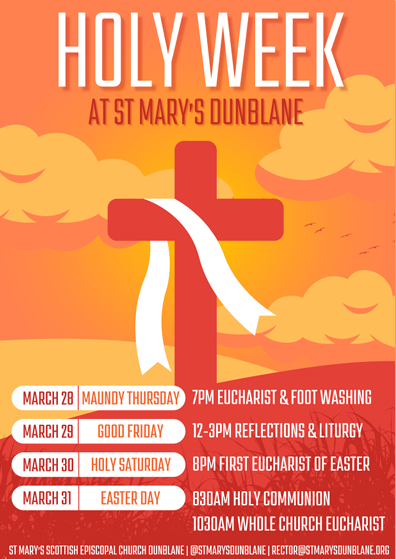Dear friends,
It’s been a good summer for home-grown fruit here in Dunblane. In addition, it appears that there will be a bumper crop of apples and pears this autumn, the horse chestnuts are laden with conkers and the rowan trees are aflame with berries. But as I delight in this year’s abundance of wild raspberries, blaeberries and blackberries, I can hear my grandmother’s grim prediction that a hard winter is on the way. She taught my mother and I to prepare for the winter months by filling our larders with jams, jellies and pickles. Having endured the deprivations of two World Wars and the Great Depression, it was second nature for her to squirrel away supplies and to be always ready for a crisis.

We will probably never know the nature of the crisis over a thousand years ago which caused members of a Christian community in south-west Scotland to hide their most precious possessions in a hole in the ground. As I explored the National Museum of Scotland’s wonderful exhibition of the treasures of the Galloway Hoard at Aberdeen Art Gallery last month, it struck me that the experience of these ancient churchmen might have been similar to those fleeing conflict today. Depositing their gold and silver in such a way was clearly an act of desperation but it also represented their hope that they would one day return to rebuild their community. Our prayer for our asylum-seeker friends living in Castlemilk and for the Ukrainian refugees living in our midst is that one day there will be peace and justice in their native countries and an opportunity for them and their children to flourish.
In the meantime, we have an opportunity to befriend and support them and to offer them hospitality. I am delighted that we at St Mary’s are co-hosting a regular Saturday morning arts event for the Ukrainians with HSTAR, a charitable organisation which provides counselling, therapy and workshops for women and youngsters affected by trauma or abuse. I hope that during the autumn and winter there will be many more opportunities for us to share meals, develop friendships and provide support. Look out for information about another visit from the asylum-seeker families organised by Pippa. The joy of young and old alike as they tried out the play equipment in the Laigh Hills and joined us for a simple picnic was something I will never forget.
The autumn is traditionally a time when we give thanks for the Harvest and this year it will be a special celebration at St Mary’s as it will be our curate Rachael Wright’s first Sunday with us following her ordination at St Ninian’s Cathedral the previous week. Our Harvest Thanksgiving on 9th October will be the culmination of the Season of Creation which starts on 4th September with a special service when I’ll be joined by Pam Martin, a lay minister from the Lake District who has been involved for many years in organising environmental action. The theme of this year’s ecumenical Season of Creation is ‘Listen to the Voice of Creation’ and the symbol of the burning bush was chosen not only to refer to the devastating wild fires which are a consequence of global warming, but also to the episode in the Book of Exodus where fire symbolizes God’s presence close to all who are suffering and our need ‘to take off our shoes’ and connect once more with God’s natural world.

At the launch of the Season of Creation which I attended on line in February, Revd. Chad Rimmer, Chair of the Steering Committee said:
‘In prayer, when we centre the cry of the Earth and the cry of those livelihoods who are threatened by habitat loss and climate change, communities of worship can amplify the voices of young people, indigenous people and affected communities who are not heard in society and those who are displaced or have been disappeared from public spaces and political processes.’
By learning from those with expert knowledge like Pam Martin and also Anne Murray from Water Aid who will be joining us on the evening of 11th September, I hope that we will find ways to speak out for those most affected. But it is important also that we spend time in prayer individually and together so that we can hear God’s ‘still small voice’ speaking to us.
A striking feature of the Galloway hoard is that it had been arranged in two distinct layers. The top layer was probably intended as a decoy to convince plunderers that they had found everything worth taking. The real treasure lay deeper in the ground. The same is true of church life. It is very easy to throw ourselves into action and miss the call to delve deeper. I hope that we will all, young and old, find opportunities during the Season of Creation to be still and to explore the precious mysteries of God.
With love to you all,
Nerys






